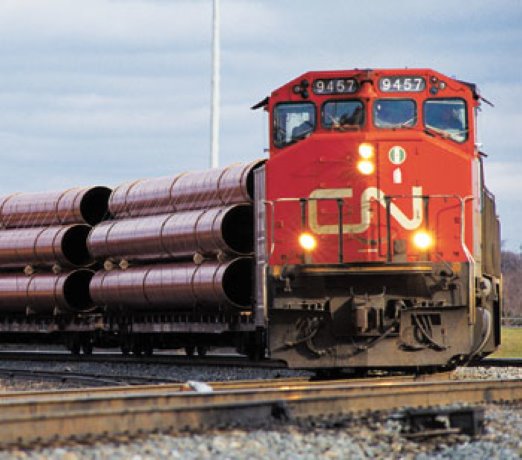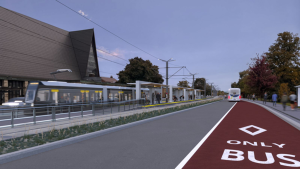Canadian National Railway Company is expanding the capacity of key segments of its rail infrastructure to support increased freight traffic and the economy in northern Alberta and Western Canada.
Canadian National Railway Company is expanding the capacity of key segments of its rail infrastructure to support increased freight traffic and the economy in northern Alberta and Western Canada.
“CN is experiencing continued growth in Western Canadian freight volumes,” said Keith Creel, CN executive vice-president and chief operating officer.
“We are making strategic rail investments in Alberta to increase network capacity and improve train velocity along our transcontinental main line between Edmonton and Winnipeg, and to be positioned to handle greater volumes of freight over our line to Fort McMurray, the gateway to Alberta’s oilsands production region.”
As part of this strategy, CN is investing $12 million to construct 5.6 kilometres of track between two sidings located about 32 kilometres east of Edmonton on the Wainwright Subdivision.
This will create about 12.5 kilometres of new double track, which will help dispatchers to expedite the meeting of trains and to increase train velocity on one of the highest-density corridors on the CN system.
“Western Canada is an area where we are experiencing good traffic growth for bulk commodities, such as grain, coal, sulphur, potash, forest products and chemical goods,” said Mark Hallman, CN director of communications and public affairs.
“Wainwright handles intermodal containers being transported through (import) Vancouver and Prince Rupert, as well as forest products through B.C. (export) and domestic containers. There are also import containers being shipped into the US Midwest to Chicago, Memphis and Central Canada.”
To transport these shipments, CN is investing $12 million to build 11,400 feet of track east of Clover Bar yard on the Wainwright subdivision in the greater Edmonton area to facilitate switching in the terminal.
The additional track will help to expedite arrivals and departures of freight trains at the yard.
In another strategic investment, CN is investing $3 million to reconfigure tracks at Walker Yard in Edmonton, which will increase the velocity of the terminal in handling greater volumes of freight traffic.
“We are expanding the rail corridor to Fort McMurray to handle petroleum coke and sulphur going south out of that area,” said Hallman.
“This will also allow us to handle construction materials, equipment and machinery that are entering this area.”
The company is investing $10 million on CN’s secondary Lac La Biche Subdivision in northern Alberta to support additional traffic to and from Fort McMurray.
CN bought the Athabasca Northern Railway Ltd in December 2007 for $25 million to provide direct rail access to the major energy projects in development in the Athabasca, Peace River and Cold Lake oilsands regions.
The deal involved a rehabilitation plan that invested $135 million in rail-line upgrades over three years to improve transit times and service between Boyle, AB and Fort McMurray.
The line from Boyle, 150 kilometres north of Edmonton, crosses unstable muskeg over 35 per cent of its length, and needed improved rails, ties, bridges and ballast after years of neglect.
CN’s rehabilitation plan was supported by long-term traffic volume guarantees the company negotiated with shippers Suncor Energy Inc., OPTI Canada Inc., and Nexen Inc. These oilsands producers ship sulphur and petroleum coke to Asia and receive incoming shipments of construction materials, machinery and diluent, which is a petroleum product used to thin out bitumen so it can move through pipelines.
The upgrade of the 300-kilometre length line increased train speed from an average of 16 kilometres an hour to 40 kilometres per hour and allowed for heavier loads.
The rail link from Boyle to Fort McMurray was constructed during the First World War and received few upgrades until CN began its rehabilitation plan.
The previous owners of the Athabasca Northern Railway planned to sell the line off as salvage. But, when the price of oil began to take off in the early 2000’s, the owners changed their minds and decided to try their hand at running it.











Recent Comments
comments for this post are closed